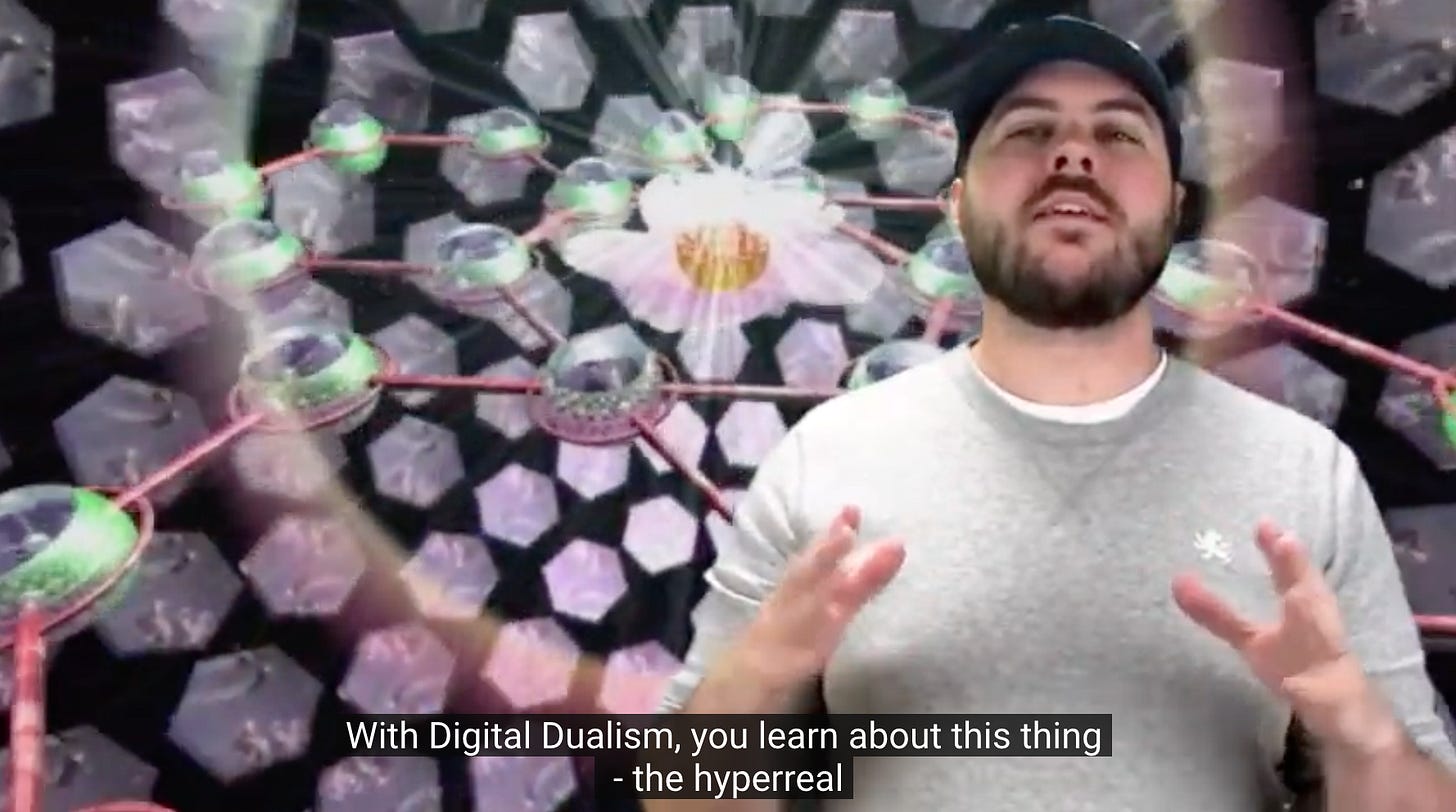Today is the start of something big. That’s right, I’ve decided to finally crack open the big fat can of worms that is hyperreality. So strap in tight and get ready to dive into my most enduring special interest.
Hyperreality
I’d been somewhat avoiding this topic - not because I don’t love it, I absolutely do - purely because it’s huge and I’m not sure yet how I’m going to divide it up. But here goes.
Hyperreality has a million different definitions depending on where you look. The prefix hyper- of course means over, more than, excessive etc. So in that way hyperreal is more than real. An excess of realness. A realer real than real. You get the picture.

Simulacra, simulation and stock photography
Hyperreality as a term was coined by the philosopher Jean Baudrillard in Simulacra and Simulation - a book largely hated by art students the world over. The concepts went way over my head when I first had to study it at university, and I’m certain there are people who’d take issue with my simplification of it now. But as you know I’m all about simplifying tricky concepts, so -
In short, for Baudrillard, hyperreality is representation without an original. The representation has come to replace the original, to be more valid than the original, or evolved to an extent that it can no longer be linked to any original that ever existed.
The simulacrum - the copy, symbol, representation - perfectly represents something. It’s a perfect symbol with all the affordances to make you immediately understand what it symbolises - whilst being nothing like any actual real thing. It’s somehow more representative of a thing than the thing itself could ever be. Don’t worry if you’re already lost at this point - I’ve got lots of examples up my sleeve that should make it all a bit clearer.
One of the first fascinations I developed in relation to this notion of hyperreality was stock photography. For me, stock photography is a perfect example of a symbol that symbolises something that doesn’t exist. It is hyperreal in the truest sense - managing to be a perfect representation of reality whilst also not resembling it at all.
Stock photography is shorthand. It’s supposed to tell you something, from as simple as “this photo of a someone dressed as a doctor tells you that you are visiting a website related to medicine” to as OTT as “this photo showing a group of young adults of a variety of genders and ethnicities who are smiling and wearing smart-casual office attire demonstrates that our organisation is young, diverse and fun”. The photo of the ‘doctor’ looks nothing like a scene you would actually see in a hospital, and no one’s office resembles the one on the company website - yet we understand that they represent those people and places. They are simultaneously both accurate representations of reality and nothing like reality.

Stock photography is of course not a new phenomenon, and in some ways you could say it has become more ‘real’ over time, as consumers have made it clear they can see through the falseness of sterile-looking, cheesy and repetitive imagery (although you do still see a lot of that out there). Brands strive to portray a more relatable, honest, raw or otherwise realistic world. Yet this version of ‘real’ is of course still hyperreality.
People follow influencers and travel vloggers for a glimpse into a ‘real’ life that we all know is highly curated and often staged. We adapt our own lives to mimic these worlds and so continuously push the ‘real’ further away - separating the representation from its copy. We are surrounded by hyperreality.
Of course, I say ‘real’ within quotation marks because this newsletter makes no concrete claims on the nature of realness - every ‘real’ is also a ‘not real’, and vice versa 😉
Hopefully this tiny toe-dip into the delicious depths of hyperreality has got you thirsty for more. I can’t wait to dive deeper with you in tow.
Until next time <3
Edie xx








I am already lost, though in a good way! I know just how that post-dentistry kid feels 🤣. Looking forward to next Wednesday...